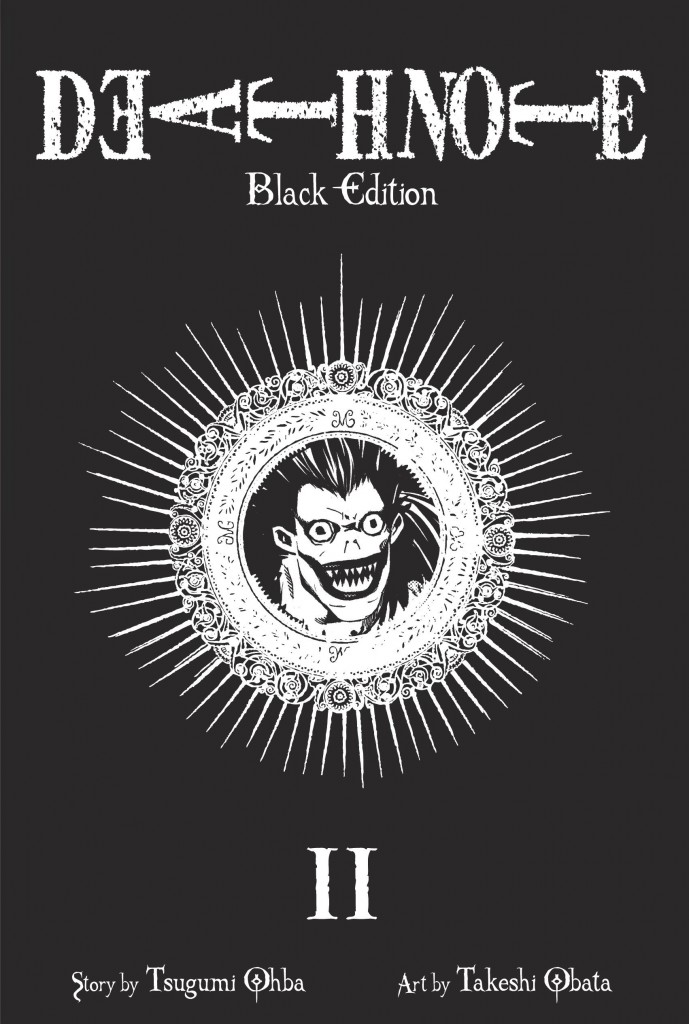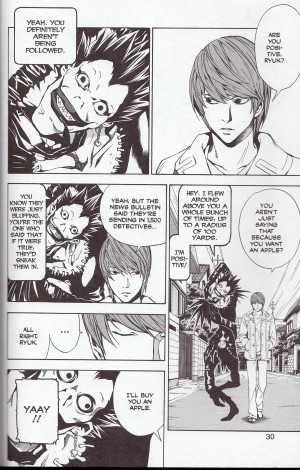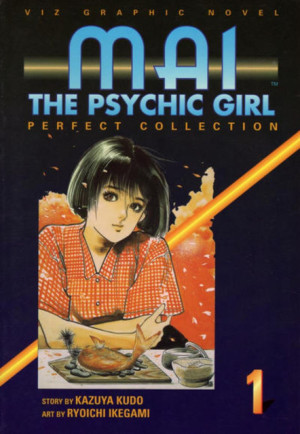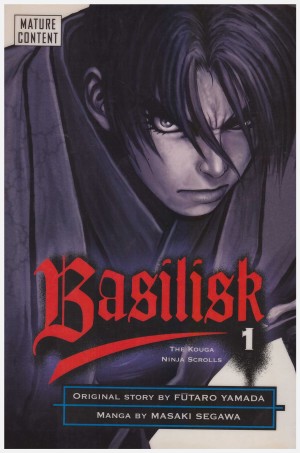Review by Karl Verhoven
The first Black Edition introduced us to intelligent and conniving high school student Light Yagami who found a notebook deposited by an other dimensional Death-God, or Shinigami, Ryuk. Provided it’s accompanied by a mental visual image, the name of any person written in this notebook ensures their death in described circumstances. It’s one hell of a plot from Tsugumi Ohba, and for Yagami it’s one hell of an opportunity as he sets about dealing with the worst of humanity. This attracts the attention of the super slueth known only as L, and even before this volume begins Yagami is on his list of possible suspects as the identity of the anonymous killer the media are referring to as Kira.
The game of cat and mouse between the pair escalates all the way through this slightly larger presentation of what was originally books 3 and 4, and there’s rarely a respite from the tension or the constant attempts of Yagami and L to second guess the other. By the end of the previous book Yagami was already morally compromised by killing to protect his identity, rather than exclusively from an ethical imperative, and by the midway point it’s apparent that there’s a second Death-God’s notebook in Japan.
Ohba’s spent a considerable time contemplating the logistics of how the notebooks work. The chapters are separated by pages offering what’s in effect the small print, detailing how matters occur, the possible variations and pitfalls. As well as being entertaining in their own right, most information provided has a direct impact on the stories. That’s not yet the case with “If you lose the death note or have it stolen you will lose its ownership unless you retrieve it within 490 days”, but time passes during the series, in this volume marked by Yagami’s graduation to university, so it may be relevant later.
Possibly the best comment that can be passed on Takeshi Obata’s art is that it’s only when taking pause to consider does it become apparent how good he is. Due to the psychological nature of the plot there is, of necessity, a lot of reading, yet there’s never a place where the flow is interrupted by an awkward drawing, or by having to figure out exactly what’s going on. Beyond that Obata’s character designs are memorable. A condition of the notebook is that a Death-God manifests, only visible to the book’s possessor. We’ve already been impressed with his design for Ryuk, and now another plays a part. It’s possibly worth studying the colour illustration opening the book featuring several more. The inspiration is obvious, and the design is great. This also applies to his contorted depictions of L, unable to sit in conventional fashion and with a perpetual wide-eyed stare.
Death Note is a page turning thriller of the highest order, and nothing about this content alters that opinion. Alternatively it can be picked up in the massive All In One Edition.





